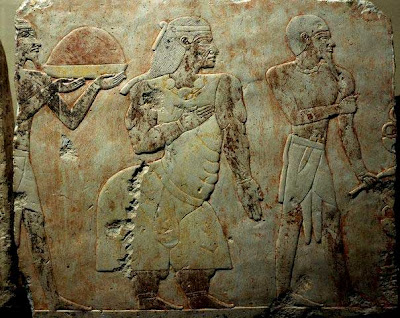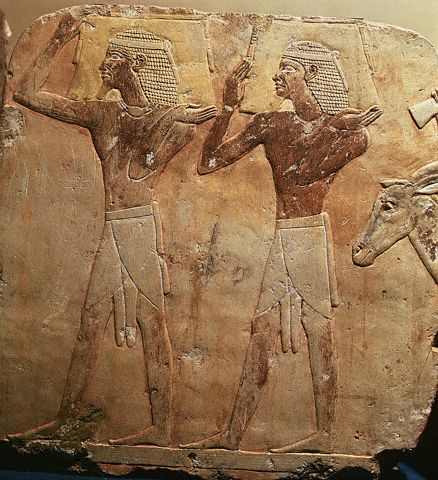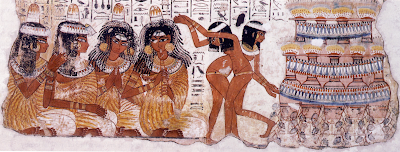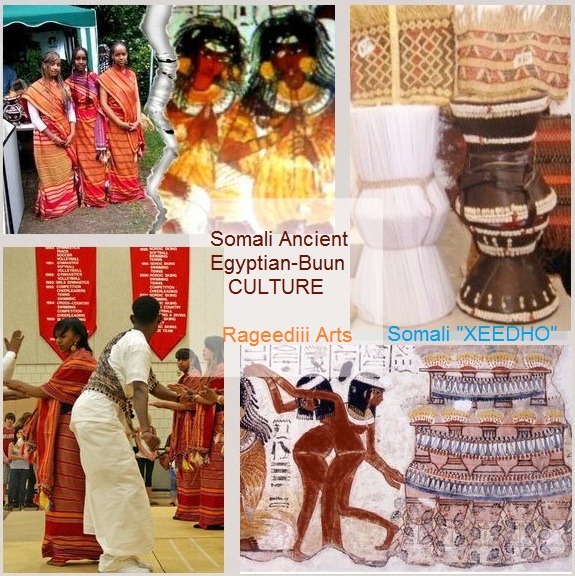You are using an out of date browser. It may not display this or other websites correctly.
You should upgrade or use an alternative browser.
You should upgrade or use an alternative browser.
The land of Punt was a Somali kingdom
- Thread starter Canuck
- Start date
- Status
- Not open for further replies.
Sorry I do not have any match but my sister, 4 cousins, one aunt look like copy and paste Iman the model.@Canuck you should post your Pharaoh match
This is for you so do not cry again and complain lack of historyYawn
Get a life
Yawn
Get a life
Why do these people claim civilization of others?
Is it hard to just accept the fact our ancestors where camel herders nothing less/more

waraabe
Your superior
Why do these people claim civilization of others?
Is it hard to just accept the fact our ancestors where camel herders nothing less/more

This niic leads to niic forever
waraabe
Your superior
This is for you so do not cry again and complain lack of history
You need to get a life. There is no proof they were somali
There is no proof you are also Somali stop trolling and get educationYou need to get a life. There is no proof they were somali
-
Just ask any Egyptain they will tell Somalia is Puntland they studied in schools dummyWhy do these people claim civilization of others?
Is it hard to just accept the fact our ancestors where camel herders nothing less/more

waraabe
Your superior
There is no proof you are also Somali stop trolling and get education
I am more Somali then you. You are obessed with others. Develop your regions instead of always looking at others.
waraabe
Your superior
Just ask any Egyptain they will tell Somalia is Puntland they studied in schools dummy
Somalia isn't
Parts of Eritrea, Djibouti and somaliland are according to some historians. Kastumoland state wasn't part of it according to them. Non the less we don't know where the land of punt was
Puntite Destiny.Cultural Anthropological Links.
The Ancient-Egyptians named themselves "Rageedii": "The perfect men" in their language and the Somali People use still now this name "Rageedii" with the same ancient-egyptian meaning "The perfect men". For example in somali language : " U dadaal sidii Rageedii"= Make efforts as Rageedii ,the perfect men.
Here, Some historical and linguistic proofs :
The Famous French Egyptologist Christiane D.Noblecourt , in her book "Hatshepsout ,the Mysterious Queen" detailed the expedition of Queen Hatshepsut to the Land of Punt and she said that the Ancient-Egyptians and The Puntites used to speak and communicate with the same language./
« Again the representations of the early Puntites, or Somali people, on the Egyptian monuments, show striking resemblances to the Egyptians themselves. » By Brian Brown New York: Brentano's[1923]/
In “The Making of Egypt” (1939). Petrie states that the Land of Punt was “sacred to the Egyptians as the source of their race"/
"The King Sahure (2458-2446 B.C.) from this Egyptian Old Kingdom, Dynasty V (2498-2491 B.C.) made a trade expedition to the Land of Punt . Egyptian ships also reached the shores of the land of Punt on the Somali coast to procure highly valued cargoes of myrrh, ebony and animals, among other goods. " Text Reference: The UNESCO General History of Africa: Ancient Civilization of Africa, Vol, II, General History of Africa, G. Mokhtar, 1990, p 64-68 . /
"The Egyptians sometimes called Punt land Ta-Netjeru, meaning "Land of the Gods," and considered it their place of origin ." (Richard Pankhurst, The Ethiopian Borderlands:1997) /
The greek historian Diodorus of Siculus in his book "Universal history "said that in 6th century before-J-Christ , because of a political crisis in Egypt and the euro-asiatic's infiltrations in Egypt , more than 200 thousands of Ancient-egyptians migrated in the south of the Nile By crossing Ethiopia-Nubia with their boats ,in the direction of North-Eastern of Africa (Now, Sudan, Somalia ,Djibouti,Ethiopia ...)
This last historical fact can explain why the somali language is a survived ancient-egyptian language ,according to the british linguist : "The language of ancient Egypt belonged to the Hamitic group; Surviving Hamitic languages are spoken across a large part of North Africa and include Somali." (The english language ,A Historical Introduction," by Charles Barber,british linguist .)
All the symbolical ancient-egyptian names : "Horakhty, Aton, Horus, Isis, Nebhet ,Hâpy etc... " were preserved in Somali language and still now , the somali people use these names with their original egyptian-puntite pronounciation . For example : "Oraxthy" means" the sun" in Somali as the ancient-egyptians. "AAR" means "lion" in ancient-egyptian and also in somali . There is a huge somali-egyptian linguistic and historical and cultural proofs . Thanks for reading and sharing !
Short Egyptian-Puntite Research made by Abdisalam Mahamoud ,Master II degree of Philosophy :History of Civilisations and Religions.
sajokal5@yahoo.fr
13/05/2012 in France .
The Ancient-Egyptians named themselves "Rageedii": "The perfect men" in their language and the Somali People use still now this name "Rageedii" with the same ancient-egyptian meaning "The perfect men". For example in somali language : " U dadaal sidii Rageedii"= Make efforts as Rageedii ,the perfect men.
Here, Some historical and linguistic proofs :
The Famous French Egyptologist Christiane D.Noblecourt , in her book "Hatshepsout ,the Mysterious Queen" detailed the expedition of Queen Hatshepsut to the Land of Punt and she said that the Ancient-Egyptians and The Puntites used to speak and communicate with the same language./
« Again the representations of the early Puntites, or Somali people, on the Egyptian monuments, show striking resemblances to the Egyptians themselves. » By Brian Brown New York: Brentano's[1923]/
In “The Making of Egypt” (1939). Petrie states that the Land of Punt was “sacred to the Egyptians as the source of their race"/
"The King Sahure (2458-2446 B.C.) from this Egyptian Old Kingdom, Dynasty V (2498-2491 B.C.) made a trade expedition to the Land of Punt . Egyptian ships also reached the shores of the land of Punt on the Somali coast to procure highly valued cargoes of myrrh, ebony and animals, among other goods. " Text Reference: The UNESCO General History of Africa: Ancient Civilization of Africa, Vol, II, General History of Africa, G. Mokhtar, 1990, p 64-68 . /
"The Egyptians sometimes called Punt land Ta-Netjeru, meaning "Land of the Gods," and considered it their place of origin ." (Richard Pankhurst, The Ethiopian Borderlands:1997) /
The greek historian Diodorus of Siculus in his book "Universal history "said that in 6th century before-J-Christ , because of a political crisis in Egypt and the euro-asiatic's infiltrations in Egypt , more than 200 thousands of Ancient-egyptians migrated in the south of the Nile By crossing Ethiopia-Nubia with their boats ,in the direction of North-Eastern of Africa (Now, Sudan, Somalia ,Djibouti,Ethiopia ...)
This last historical fact can explain why the somali language is a survived ancient-egyptian language ,according to the british linguist : "The language of ancient Egypt belonged to the Hamitic group; Surviving Hamitic languages are spoken across a large part of North Africa and include Somali." (The english language ,A Historical Introduction," by Charles Barber,british linguist .)
All the symbolical ancient-egyptian names : "Horakhty, Aton, Horus, Isis, Nebhet ,Hâpy etc... " were preserved in Somali language and still now , the somali people use these names with their original egyptian-puntite pronounciation . For example : "Oraxthy" means" the sun" in Somali as the ancient-egyptians. "AAR" means "lion" in ancient-egyptian and also in somali . There is a huge somali-egyptian linguistic and historical and cultural proofs . Thanks for reading and sharing !
Short Egyptian-Puntite Research made by Abdisalam Mahamoud ,Master II degree of Philosophy :History of Civilisations and Religions.
sajokal5@yahoo.fr
13/05/2012 in France .
"According to the Ancient Egyptians themselves , the egyptians came from the Land of Punt, the land of gods,ancestors and even , Queen Hatshepsout of Egypt (15th century B-C) said that Hathor The mistress of Punt ,her mother was from the land of Punt ,from "Buun" the ancient name of Somalia ! To conclude ,"Buun" means in Somali "Horn" and the Land of "Buun" (or Punt in european language) is located in the the Horn of Africa, in the Somali territories," by Abdisalam Mahamoud . Master II degree: History of Civilisations and Religions.

A) King Barreh and his Queen Hadiyo in the Land of Punt ,Somalia,in Horn of Africa at the 15th century BC (before Jesus Christ). This is a Fresco of the trade expedition to the Land of Punt sent by Hatshepsout the female Pharaoh.In this Image,the Royal Puntite Couple welcome warmly the Ancient-Egyptians in the Land of God ,Punt ,"TA-Netjer " considered by the Egyptians as their Original Homeland . The King wears the somali traditional loincloth "Gundhate" with the dagger "Qolxad" and the Queen wears the "Garays" the official somali female cultural dress and the Somali Hairstyle with the white Cloth Headband .

A) King Barreh and his Queen Hadiyo in the Land of Punt ,Somalia,in Horn of Africa at the 15th century BC (before Jesus Christ). This is a Fresco of the trade expedition to the Land of Punt sent by Hatshepsout the female Pharaoh.In this Image,the Royal Puntite Couple welcome warmly the Ancient-Egyptians in the Land of God ,Punt ,"TA-Netjer " considered by the Egyptians as their Original Homeland . The King wears the somali traditional loincloth "Gundhate" with the dagger "Qolxad" and the Queen wears the "Garays" the official somali female cultural dress and the Somali Hairstyle with the white Cloth Headband .
A) King Barreh and his Queen Hadiyo in the Land of Punt ,Somalia,in Horn of Africa at the 15th century BC (before Jesus Christ). This is a Fresco of the trade expedition to the Land of Punt sent by Hatshepsout the female Pharaoh.In this Image,the Royal Puntite Couple welcome warmly the Ancient-Egyptians in the Land of God ,Punt ,"TA-Netjer " considered by the Egyptians as their Original Homeland . The King wears the somali traditional loincloth "Gundhate" with the dagger "Qolxad" and the Queen wears the "Garays" the official somali female cultural dress and the Somali Hairstyle with the white Cloth Headband .

B) Two Somali Puntites Workers carrying frankincence for the Egyptians who came to the Land of Punt.Trade Expedition of the Queen Hateshepsout in the 15th century B-C . (1490-1470 BC) .The Somalis wear still now this traditional costume of their Egyptian-Puntites Ancestors .The white royal loincloth called "Gundhate" "Gunti" in both Somali and Egyptian languages and the cultural necklace called " Xirsi" ,"Qardhaase".
These Frescoes A) B) and many others were found in the temple of the Pharaonic Queen Hatshepsout ;named "ISIR ISIR".because the Columns of the temple were built with the shape of the roots of the papyrus. "Isir" means "Papyrus , roots of Papyrus" " in ancient-egyptian language and "Isir" is currently a somali female name. This word "Isir" in somali refers also to the roots of humans as the "Ancestors

B) Two Somali Puntites Workers carrying frankincence for the Egyptians who came to the Land of Punt.Trade Expedition of the Queen Hateshepsout in the 15th century B-C . (1490-1470 BC) .The Somalis wear still now this traditional costume of their Egyptian-Puntites Ancestors .The white royal loincloth called "Gundhate" "Gunti" in both Somali and Egyptian languages and the cultural necklace called " Xirsi" ,"Qardhaase".
These Frescoes A) B) and many others were found in the temple of the Pharaonic Queen Hatshepsout ;named "ISIR ISIR".because the Columns of the temple were built with the shape of the roots of the papyrus. "Isir" means "Papyrus , roots of Papyrus" " in ancient-egyptian language and "Isir" is currently a somali female name. This word "Isir" in somali refers also to the roots of humans as the "Ancestors
B) Two Somali Puntites Workers carrying frankincence for the Egyptians who came to the Land of Punt.Trade Expedition of the Queen Hateshepsout in the 15th century B-C . (1490-1470 BC) .The Somalis wear still now this traditional costume of their Egyptian-Puntites Ancestors .The white royal loincloth called "Gundhate" "Gunti" in both Somali and Egyptian languages and the cultural necklace called " Xirsi" ,"Qardhaase".
These Frescoes A) B) and many others were found in the temple of the Pharaonic Queen Hatshepsout ;named "ISIR ISIR".because the Columns of the temple were built with the shape of the roots of the papyrus. "Isir" means "Papyrus , roots of Papyrus" " in ancient-egyptian language and "Isir" is currently a somali female name. This word "Isir" in somali refers also to the roots of humans as the "Ancestors

Ancient-Egyptians Women (to the left of this picture) performing the official Somali Cultural Dance"Dhaanto" (to the right) and also called "Hoydado"dance . The Egyptian wall painting is from the tomb of a nobleman named Nebamun. Nebamun's tomb was built around 1400 B.C. near the town of Thebes. And the somali picture is from the Somali Traditional Dance, "dhaanto" performed by the Somali Youth in the African Night at the University of Minnesota .

Wall painting from the same tomb of NebAmun (1400B-C) In this second image Here ,you have the complete fresco of this represented Ancient-Egyptian Banquet .Someone who watched the Somali Folk Dance and Festival can easily guess the striking similarities between the Main Somali Cultural Dance and the way of moving of these Ancient-Egyptian Dancers ,the gestures of the ones who are sitting to the left of this image and to the right of this fresco ,you can observ the big ceremonial Somali Vase "XEEDHO" for the offerings .
These Frescoes A) B) and many others were found in the temple of the Pharaonic Queen Hatshepsout ;named "ISIR ISIR".because the Columns of the temple were built with the shape of the roots of the papyrus. "Isir" means "Papyrus , roots of Papyrus" " in ancient-egyptian language and "Isir" is currently a somali female name. This word "Isir" in somali refers also to the roots of humans as the "Ancestors

Ancient-Egyptians Women (to the left of this picture) performing the official Somali Cultural Dance"Dhaanto" (to the right) and also called "Hoydado"dance . The Egyptian wall painting is from the tomb of a nobleman named Nebamun. Nebamun's tomb was built around 1400 B.C. near the town of Thebes. And the somali picture is from the Somali Traditional Dance, "dhaanto" performed by the Somali Youth in the African Night at the University of Minnesota .

Wall painting from the same tomb of NebAmun (1400B-C) In this second image Here ,you have the complete fresco of this represented Ancient-Egyptian Banquet .Someone who watched the Somali Folk Dance and Festival can easily guess the striking similarities between the Main Somali Cultural Dance and the way of moving of these Ancient-Egyptian Dancers ,the gestures of the ones who are sitting to the left of this image and to the right of this fresco ,you can observ the big ceremonial Somali Vase "XEEDHO" for the offerings .
Wall painting from the same tomb of NebAmun (1400B-C) In this second image Here ,you have the complete fresco of this represented Ancient-Egyptian Banquet .Someone who watched the Somali Folk Dance and Festival can easily guess the striking similarities between the Main Somali Cultural Dance and the way of moving of these Ancient-Egyptian Dancers ,the gestures of the ones who are sitting to the left of this image and to the right of this fresco ,you can observ the big ceremonial Somali Vase "XEEDHO" for the offerings .
Here 3 works of art about the pharaonic Somaali cultural heritage

Here 3 works of art about the pharaonic Somaali cultural heritage

Where did you get these maps from, what's the sites URL?
https://en.wikipedia.org/wiki/Steatopygia
"Steatopygia would seem to have been a characteristic of a population which once extended from the Gulf of Aden to the Cape of Good Hope, from which peoples the Khoisan and Pygmies may be remnants.[citation needed] Among the Khoisan, it begins in infancy and is fully developed by the time of the first pregnancy. While the Khoisan afford the most noticeable examples of its development, it is by no means rare in other parts of Africa."
Queen Ati of Pwenet was Khoisan, or Bon.
Somalis did not reach the Red Sea coast until the first century AD. They conquered and enslaved the Bon , who became the Madhibaan and Midgan, in the 12th and 13th centuries.
Somalis are not the people of Pwenet.
http://www.madhibaan.org/
- Status
- Not open for further replies.
